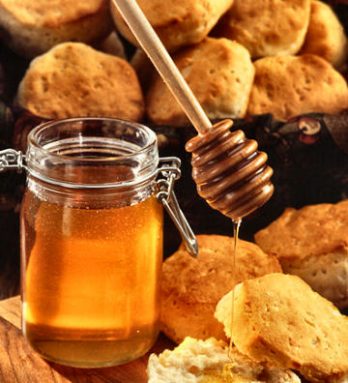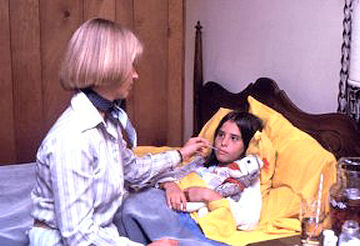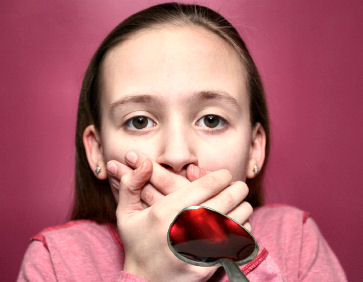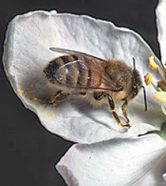Healing honey
Cough medicines don't work and they can have unpleasant side effects. Doctors are starting to recommend honey instead.
By Emily Sohn
Coughs, sniffles, sneezes, runny noses: Colds and other nasty lung infections are especially common in winter. To fight the misery, many people swallow syrups and pills that claim to clear stuffy noses, soothe sore throats, stifle coughs, and improve sleep.
Growing evidence, however, suggests that these medicines don’t really work. What’s worse, they can have unpleasant—even dangerous—side effects, especially for young children. That’s why some doctors are now recommending an ancient remedy for their coughing patients: honey.
 |
|
Honey might be good for more than just sweetening foods and beverages.
|
| U.S. Department of Agriculture (USDA), Photo by Scott Bauer |
It’s the kind of advice you might expect from your grandmother. But a new study suggests that the sticky sweet stuff might have real healing power.
“Honey has been used for centuries in folk remedies by cultures all over the world,” says Ian Paul, a pediatrician at Pennsylvania State University Children’s Hospital in Hershey, Pa. “We thought it would be reasonable to test it.”
Stubborn coughs
Paul was motivated to test honey because treating coughs in children has recently become a sticky subject.
Coughing is the body’s way of clearing irritated airways to help you breathe. But too much coughing can irritate your lungs and throat even more. Hacking away can also make it tough to get the sleep your body needs to heal. Hoping to ease the suffering of their children, parents often give them cough medicine.
 |
|
Parents are often desperate to ease the suffering of their sick kids.
|
| CDC, Public Health Image Library |
These drugs have been around for decades, and their manufacturers claim they help kids feel better. But there have never been any good studies showing that they work, Paul says.
In 1997, the American Academy of Pediatrics even warned that codeine and dextromethorphan (DM)—two of the four most common ingredients in cough medicines—did nothing for young children. Codeine and DM are supposed to work by blocking messages from the brain that tell the body to cough.
A drug that doesn’t work is bad enough. But cough and cold medicines can also cause severe side effects, including drowsiness or hyperactivity, hallucinations, headaches, vomiting, rapid heart rate, and worse. Hundreds of kids end up in the hospital each year—and some even die—after receiving too much cough medicine by mistake.
Drug test
Frustrated by the lack of good studies, Paul decided to do one himself. A few years ago, he and colleagues designed a study that involved 100 kids who were sick with coughs and other cold symptoms. All were between the ages of 2 and 18.
The researchers divided the kids into three groups. Before bed, one group of kids took syrup that contained DM. A second group received syrup containing another common cough medicine called diphenhydramine (DPH). A third group took nonmedicated syrup.
In medical experiments, these fake medicines are called placebos. By comparing patients who have taken a real drug with those who’ve taken a placebo, doctors can understand the drug’s effectiveness.
Neither the researchers nor the kids and their parents knew which group was getting which syrup.
 |
|
Medicated syrup might not be the best solution for a cough.
|
| iStockphoto.com |
Parents answered five questions about their children’s symptoms, both the night before the kids took the syrup and the night after. Results showed that kids who swallowed nonmedicated syrup improved just as much as did kids who got the drugs. Paul and colleagues published those results in 2004.
Last October, the U.S. Food and Drug Administration reviewed all the data, including Paul’s, and concluded that parents should not give cough medicines to children under 6. Around the same time, drug companies stopped selling these medicines for use in young children.
Sweet solution
Paul knew that parents would be dismayed by the news. He felt the same way.
“It’s hard as a doctor to tell people that medicine is no better than placebo when I don’t have an alternative to give them,” he says.
In his search for a different solution, Paul came across ancient anecdotes about honey’s healing powers. Doctors in ancient Egypt, for example, used it to treat wounds, coughs, and joint pain thousands of years ago.
Paul also discovered that the World Health Organization recommended honey as a throat soother, even though there was no scientific evidence of its effectiveness. Honey couldn’t hurt, Paul figured. Why not find out if it could help?
 |
|
Honey may become an unexpected addition to your medicine cabinet.
|
| National Honey Board |
He designed his next study much like the first one. At bedtime, 105 sick kids took honey-flavored DM syrup, buckwheat honey syrup, or no treatment. Parents and kids in the no-treatment group knew they weren’t getting anything, but the other two groups weren’t told which treatment they were getting.
This time, surveys showed that kids who swallowed about 2 teaspoons of buckwheat honey before bedtime coughed less and slept better than did youngsters in the other groups. Their parents slept better too.
Honey isn’t safe for children younger than 1 year old, Paul says, but his results have convinced him to recommend it as a cough suppressant for older children.
“When parents want something for their kids to take,” Paul says, honey “seems like the best option.”
Why honey?
Most people think of honey as a tasty substitute for sugar in their tea, or as a topping on a peanut butter-and-banana sandwich. So what gives the sweet stuff its healing powers?
For one thing, its thick, sticky consistency probably helps coat and soothe the throat, says Katherine Beals, a registered dietician at the University of Utah in Salt Lake City. She’s also a nutrition consultant for the National Honey Board, a honey-promoting group that funded Paul’s recent study.
Substances called antioxidants may also be part of the answer, Beals says. Antioxidants—which are also found in foods such as blueberries, spinach, and dark chocolate—protect our cells from damage.
Studies show that antioxidant levels in the body rise after someone swallows honey. All honey contains antioxidants, but certain types contain more than others.
There are more than 300 types of honey, Beals says. Color, flavor, and health benefits depend on which types of flowers honey-producing bees visit.
 |
|
The types of flowers that honeybees visit determine the type of honey they produce. This bee is pollinating an apple blossom.
|
| USDA, Photo by Jack Dykinga |
Most of the honey we buy in U.S. grocery stores is made by bees that visit clover plants. Darker honeys, such as the buckwheat type that Paul used in his experiment, are generally higher in antioxidants than lighter ones, including clover, Beals says.
Honey has another health advantage. At least some types seem to kill infectious microbes. One honey from New Zealand has proved especially good at healing wounds when slathered on the skin.
There is no evidence that eating honey will help prevent colds, Beals says. But if your throat is sore and you can’t stop coughing, it might make you feel better. And a little dose of sweetness might just cheer you up!
Going Deeper:







